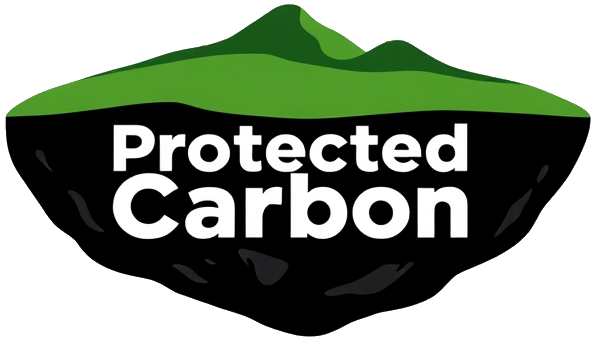- Oil & Gas
- Altamira
Protected Carbon in Colombia
Seventeen protected areas across Colombia's central and northern regions host 40 current, planned, or idled oil and gas projects, representing over 257 million tonnes of potential CO2 emissions if burned. Thirteen of these protected areas host extraction projects with reserves under 10 MMBOE. Shutting down such sites would reduce the financial cost of leaving reserves in the ground while protecting over three-quarters of the country's impacted protected areas. Six of these protected areas have no history of current or past fossil fuel extraction. With estimated start-up dates as early as 2029, swift action is needed to halt the oil industry's expansion into these undisturbed protected areas. The Guajira Basin Offshore project in the previously untouched Sawairu Seagrass Reserve is particularly concerning. While still in the initial bidding process, this development is projected to extract and transport almost 500 MMBOE of gas-condensate from a region vital to sea turtles and over 3,000 indigenous Wayuu community members
Affected Areas
These protected areas in Colombia contain current or planned fossil fuel projects. Oil, gas, and coal extraction in protected areas harms their natural value while contributing to climate change.
- Fossil Fuel Type
- Affected Area
- Oil & Gas
- Bosque Seco de la Vertiente Oriental del rio Magdalena
- Oil & Gas
- Bosque Seco Tropical Pozo Azul
- Oil & Gas
- Cuenca Alta del Rio Satoca
- Oil & Gas
- Del Complejo de Humedales de Ayapel
- Oil & Gas
- Del Humedal San Silvestre
- Oil & Gas
- Delta del Rio Rancheria
- Oil & Gas
- El Tambor
- Oil & Gas
- Hato Venecia De Guanapalo
- Oil & Gas
- La Tatacoa
- Oil & Gas
- La Travesada
- Oil & Gas
- Lago de Maracaibo
- Oil & Gas
- Mata de la Urama
- Oil & Gas
- Palomas
- Oil & Gas
- Pastos Marinos Sawairu
- Oil & Gas
- Rio San Francisco
- Oil & Gas
- Serrania de los Yariguies
- Coal
- Reserva de la Biosfera Sierra Nevada de Santa Marta
- Coal
- Serrania de los Yariguies
Extraction Data
This table shows a summary of potential emissions from fossil fuel extraction projects in protected areas in Colombia (including projects that are currently extracting, planned or idled).
- Fossil Fuel Type
- Fossil Fuel Quantity
- CO2 Quantity (MT CO2e)
- Oil & Gas
- 614.42 MMBOE
- 257.20
- Coal
- 758.00 MT
- 1,516.00
- Combined
- 1,773.20
Deposits Data
This table shows a summary of potential emissions from fossil fuel deposits under protected areas in Colombia. Many of these are not yet the target of any industry activities and could more easily become part of a non-extraction policy.
- Fossil Fuel Type
- CO2 Quantity (MT CO2e)
- Oil & Gas
- 3,269.30
- Coal
- 12,305.86
- Combined
- 15,575.16
Early Warnings
This table shows untouched protected areas that have planned carbon extraction projects, along with their respective startup dates.
- Affected Area
- Startup Date
- Reserva de la Biosfera Sierra Nevada de Santa Marta
- 0
- Serrania de los Yariguies
- 0
- Cuenca Alta del Rio Satoca
- 2029
- Del Complejo de Humedales de Ayapel
- 2030
- Bosque Seco de la Vertiente Oriental del rio Magdalena
- 2034
- Palomas
- 2035
- El Tambor
- 2039
- Bosque Seco Tropical Pozo Azul
- 2040
- Pastos Marinos Sawairu
- 2073
Profiting Companies
- Fossil Fuel Type
- Profiting Company
- Oil & Gas
- Campos de Produccion Consortium
- Oil & Gas
- Ecopetrol
- Oil & Gas
- EIG Partners
- Oil & Gas
- Frontera Energy Corporation
- Oil & Gas
- GeoPark
- Oil & Gas
- INVEPETROL
- Oil & Gas
- Open acreage
- Oil & Gas
- Parex Resources
- Oil & Gas
- Perenco
- Oil & Gas
- Perisson Petroleum Corporation
- Oil & Gas
- PetroColombia
- Oil & Gas
- Raven Pipeline
- Oil & Gas
- Repsol
- Oil & Gas
- SierraCol Energy
- Coal
- San Luis Coal SA [100%]
- Coal
- Yildirim Holding AŞ [100%]
Map
Sources
- Protected Areas: UNEP-WCMC and IUCN, Protected Planet: The World Database on Protected Areas. October 2023.
- Oil & gas extraction: Rystad Energy, U Cube Upstream Oil and Natural Gas Solution. October 2023.
- Coal extraction: Global Energy Monitor, Global Coal Mine Tracker. October 2023.
- CO2 equivalencies: Kühne, Kjell, Big numbers for bold activists: A quick method for estimating potential emissions of fossil fuel projects. Energy Research & Social Science, Volume 79, September 2021.
- Reserves & resources: German Federal Institute for Geosciences and Natural Resources (BGR), German and Global Energy Supplies. 2021.
Disclaimer
This page was created using the best data available. Despite this, errors and omissions are likely. Please contact our team with any errors or confirmation requests you may have. Further information on sources and methodology is available on our data page.
